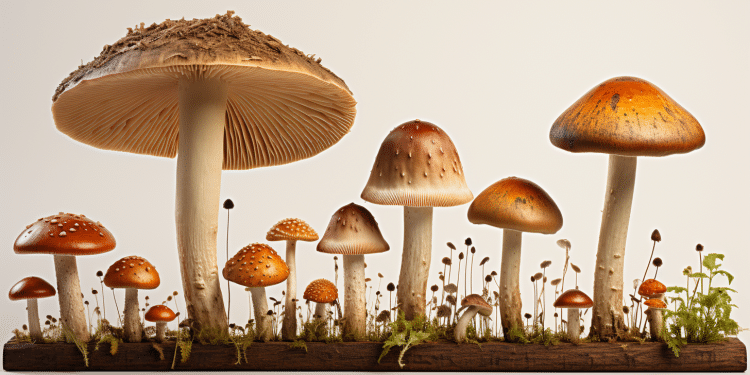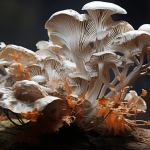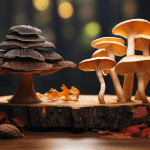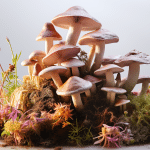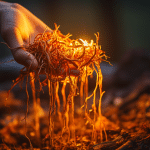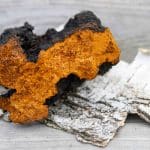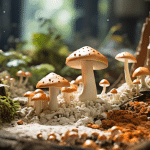The 4 types of mushrooms are saprotrophic, mycorrhizal, parasitic, and endophytic. Here’s more information on each type.
Saprotrophic Mushrooms
These types of mushrooms grow on the dead material. They secrete enzymes and acids which rip the tissues apart into smaller pieces from which they can take in nutrients. Saprotrophic mushrooms can grow on decomposing plants, wood, or even on dead animals. Saprotrophs are a vital part of the food chain, and are the main reason there is no such thing as rotting matter lying around on the ground. These mushrooms are recycling the dead stuff back into the soil and into the compost.
Learn more: Fungi Examples
Saprotrophs include some of the more common mushrooms that we have talked about thus far. They include oyster mushrooms, button mushrooms, shiitake, reishi, morel mushrooms, puffed mushrooms, enoki, and many others.
Mycorrhizal Mushrooms
These are mushrooms which form symbiotic relationships with trees and other plants. The mycelium, which is essentially the roots of fungi, entwine with other plants roots. The mushrooms provide additional water and other nutrients for the plants with which they are paired. And, in turn, the plants give them sugars in return.
Learn more: Mushroom supplement benefits
We are only just beginning to understand what an enormous advantage mycorrhizal fungi provide plants. They make them stronger, bigger, faster growing. In fact, an estimated 95% of plants benefit from the advantageous relationships they have with mycorrhizal fungi. Some of the most common mycorrhizal mushrooms include truffles, porcini, chanterelles, and matsutake mushrooms.
Parasitic Mushrooms
Unlike the mycorrhizal mushrooms, parasitic mushrooms simply take, not giving back. Given enough time, the parasitic mushrooms completely infect their host plants and kill them.
Some parasitic mushrooms include the Chaga, Lions Mane, and Honey Fungus. Parasitic mushrooms are not limited only to trees and plants, however. The caterpillar-like fungal species (Cordyceps sinesis) hunt insects, killing them, and eventually growing from their heads!.
Endophytes
Endophytic fungi are still something of a mystery to scientists. They invade plant tissues as parasitic mushrooms. But plants remain healthy, seeming to acquire greater immunity against disease, and more readily take in nutrients.
However, endophytes are also considered to be mycorrhizal, since they can also be grown without a host plant for them to grow within. Some endophytes will grow mushrooms, and others will never appear outside their host until after its death. There is a great deal of research that is still being done around endophytes, and some saprophytic or parasitic fungi are expected to likely get reclassified as endophytes in the future, once we have determined what really defines these curious mushrooms.
